Table of Contents
Schwinn Overview
Schwinn was the dominant manufacturer of American bicycles since its founding in 1895. After missing the mountain bike boat, it ceased building bikes in the US by 19911) and later went bankrupt in 1992. Schwinn was well placed to rebrand some of their existing BMX bikes as being “all terrain” and tried to place them against hand made, expensive mountain bikes. However their early efforts were to simply slap derailleurs on BMX bikes and not design a new bike from the ground up. Their first good mountain bikes didn't appear until 1985, with their Sierra, High Sierras and Cimarron with triple chainrings.
Some 1982 competitive prices:
- Schwinn King Sting 10: $570
- Ritchey Sierra: $820
- Specialized Stumpjumper: $750
- Univega Alpina Pro: $419
And now you can see why almost no Schwinns were sold and why Univega outsold Specialized by a factor of 5 in 1980s2). Schwinn created what Gary Fisher called “bike shaped objects” 3).
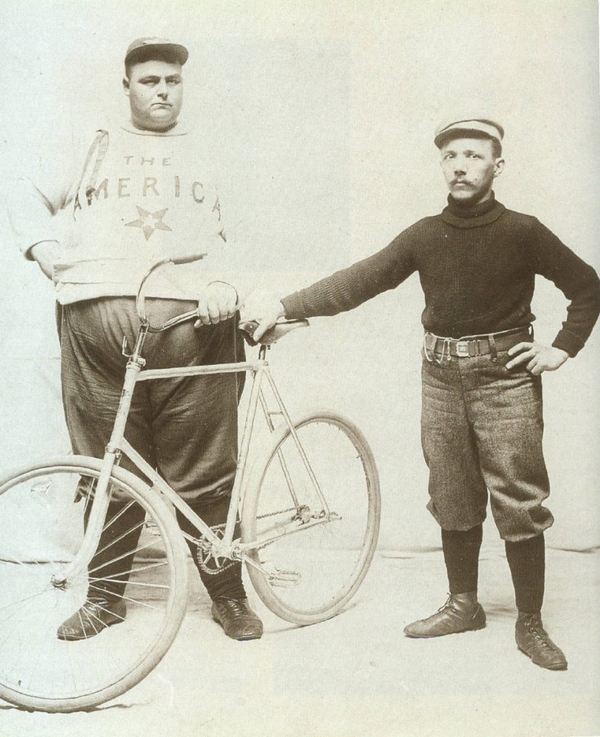
Ignaz Schwinn with Fatty Arbuckle, ca. 1910
Schwinns always made the best klunkers.
Schwinn Bikes
1978 Klunker 5
Klunker? Someone at Schwinn was hip to the haps in Marin. Schwinn dealers weren't, however, and the product dropped like a stone into the quiet pool of obscurity, not even lasting long enough to show up in a Schwinn catalog. Like its namesake, Schwinn Klunkers had to be pushed uphill and wouldn't last a speed run down Repack.
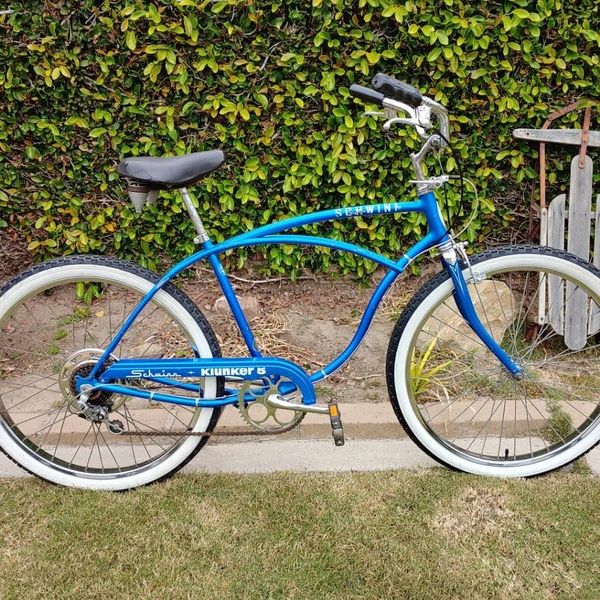
1978 Klunker 5, one of the rarest of all Schwinns
ratrodbikes
1979 Spitfire 5
After the name “klunker” proved unpopular, a new chainguard was created with a snappier name and once again it failed to even make a catalog. Very few were sold, despite a low price of $120. And a weight of 45 pounds…
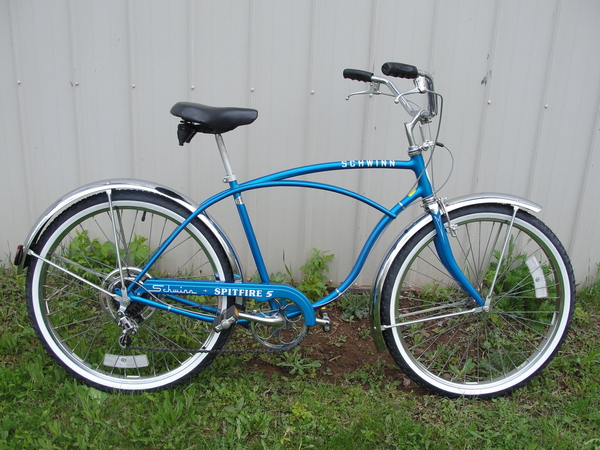
1979 Spitfire 5
Cabe Classifieds
1981 King Sting 5
After giving up on klunkers in 1980, Schwinn continues to not get it in 1981. Somehow, perhaps due to their unpopularity and thus rarity, King Sting 5's go for $5000 and up on eBay. Where $500 will get you an early Stumpjumper…
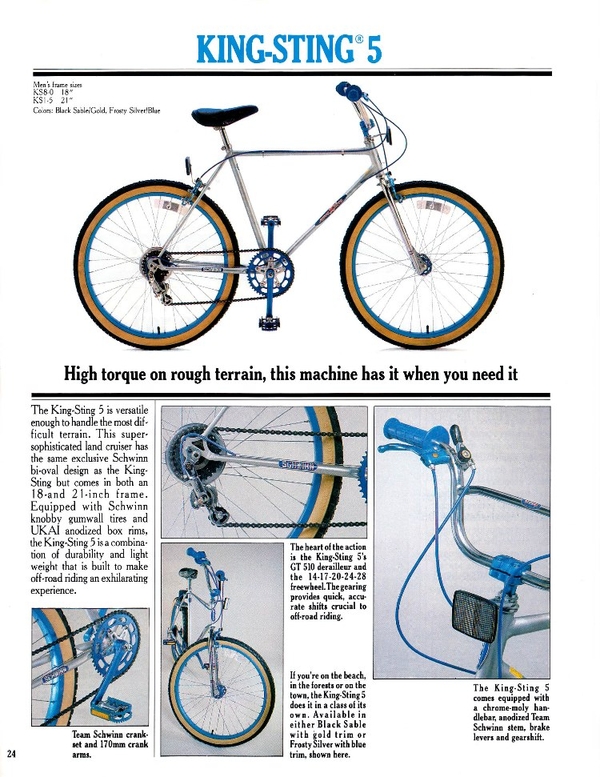
1981 King Sting catalog entry
bikecatalog.com
1982 King Sting 10
Now Schwinn sees the light. Decent gearing (40×48 - 14-38) and weight (26 lbs.) Crap components and overpriced, Schwinn fails to capture any market share. Lasted two years.
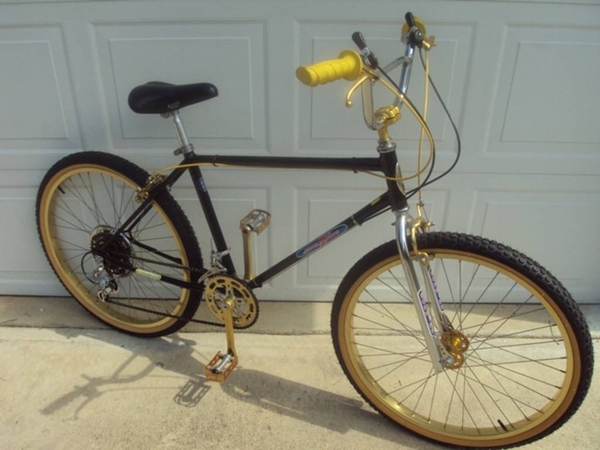
1982 King Sting 10
bmxmuseum
1982 Sidewinder 10
Nearly the same as a King Sting 10, with cheaper components, if possible. Three year production run.
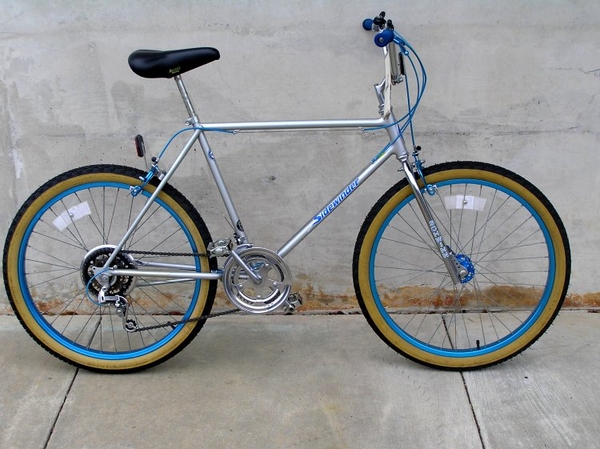
More popular than the King Sting.
Fairly common on eBay.
mombat
1982 All-Terrain Mountain Bike
Very low volume limited release sold as an unfinished frame set. This lugged ATB, made by Panasonic of Japan, would later become the TIG welded High Sierra built in Taiwan. It continued to sell in low volumes through 1984.4)

1982 All-Terrain Mountain Bike. Bullmoose bars, Shimano 600 brakes, Mountech GTL (1982-83.)
bikeforums
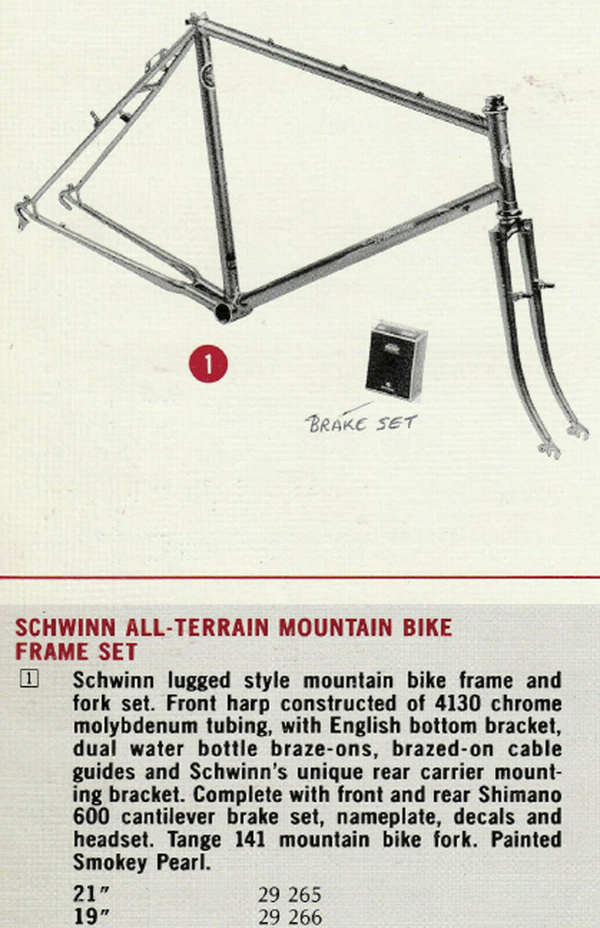
1983 catalog entry.
ebay
1983 Sierra
Getting there. Schwinn just can't let go of the BMX stem and handlebars. In 1984 it came with a triple crankset. The Sierra model name ran for many years, in many different incarnations.
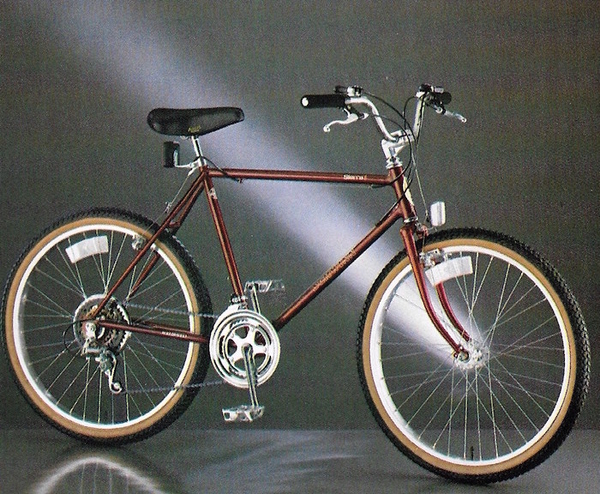
1983 Sierra
bikehistory.org
1983 Paramountain
Prototype of later Sierra. Shimano M700 derailleurs, bullmoose bars, brazed frame made in Waterford, WI, sloping crown socket fork, welded bullmoose bars, Takagi Tourney XT crankset (1970s-80s). A red one of these was shown at the 1982 Long Beach bike show. Not in any catalogs. Never offered for sale??
If this has original components then this is the earliest example of XT M700 showing up on a bicycle outside of print. The derailleur is interesting for having the “Shimano” logo inset on the rear of the body. Date codes would be interesting. Thus this was most likely sold in 1983.

1983 Paramountain
ebay
1984 High Sierra
In 1984 Schwinn switched to a triple crankset and the Ritchey invented bullmoose handlebars.
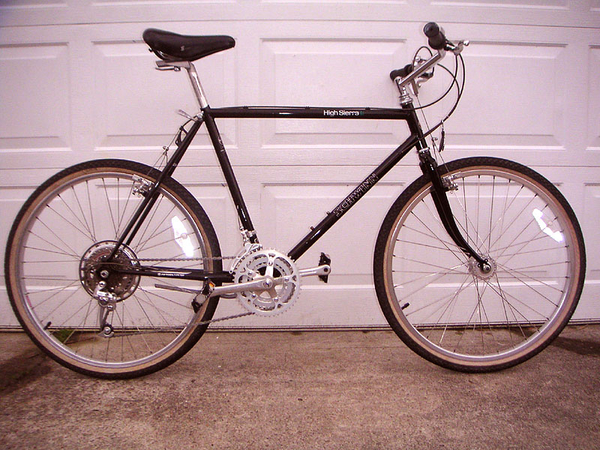
1984 High Sierra
cyclofiend
1985 Cimarron
The Cimarron was fillet brazed! Using top of the line components and an excellent Japanese made frame, Schwinn was trying to recreate the Paramount of mountain bicycles. Too late for Schwinn, however, as Schwinn's race to the bottom of the market pushed margins into the red. Five year production run.
Schwinn did try again with the Paramountain in 1987, hand built with a lugged frame and with similar Shimano XT components and slightly higher other components (Dura-Ace headset, etc.) It's perhaps more collectible, but the Cimarron is prettier.
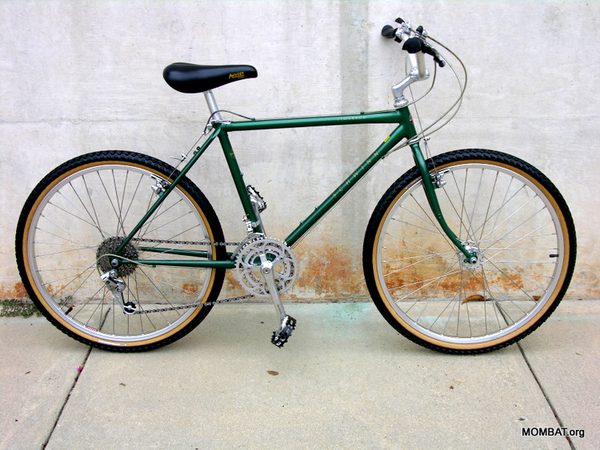
Just swap the handle bars, and it would be good for Repack.
And maybe those tires…
mombat
1986 High Sierra
SunTour XC 6300 derailleurs (1984-86), 3×5 gearing, SunTour XC rollercams, bullmoose bars, Sakae FX cranks, SunTour XC Sport brake levers (1986-88), Made in Taiwan sticker, 4130 cromo tig welded frame (with lugged chainstays?)

1986 High Sierra
facebook
1987 Paramountain
“Ned Overend” signature edition. Sold as a frame only in small batches. Handmade in the US.

1987 Paramountain
facebook
Production Notes
[1]. Production runs are a mystery, but the catalogs show years available: Schwinn catalogs by year Also see: More catalogs
[2]. Early production numbers are mostly guesswork. Serial numbers aren't much help, as they're not tied to a model number. Vintage market rarity hints that early Schwinn Klunker/King Sting 5/Spitfire 5's were very low volume. Certainly less than 100.